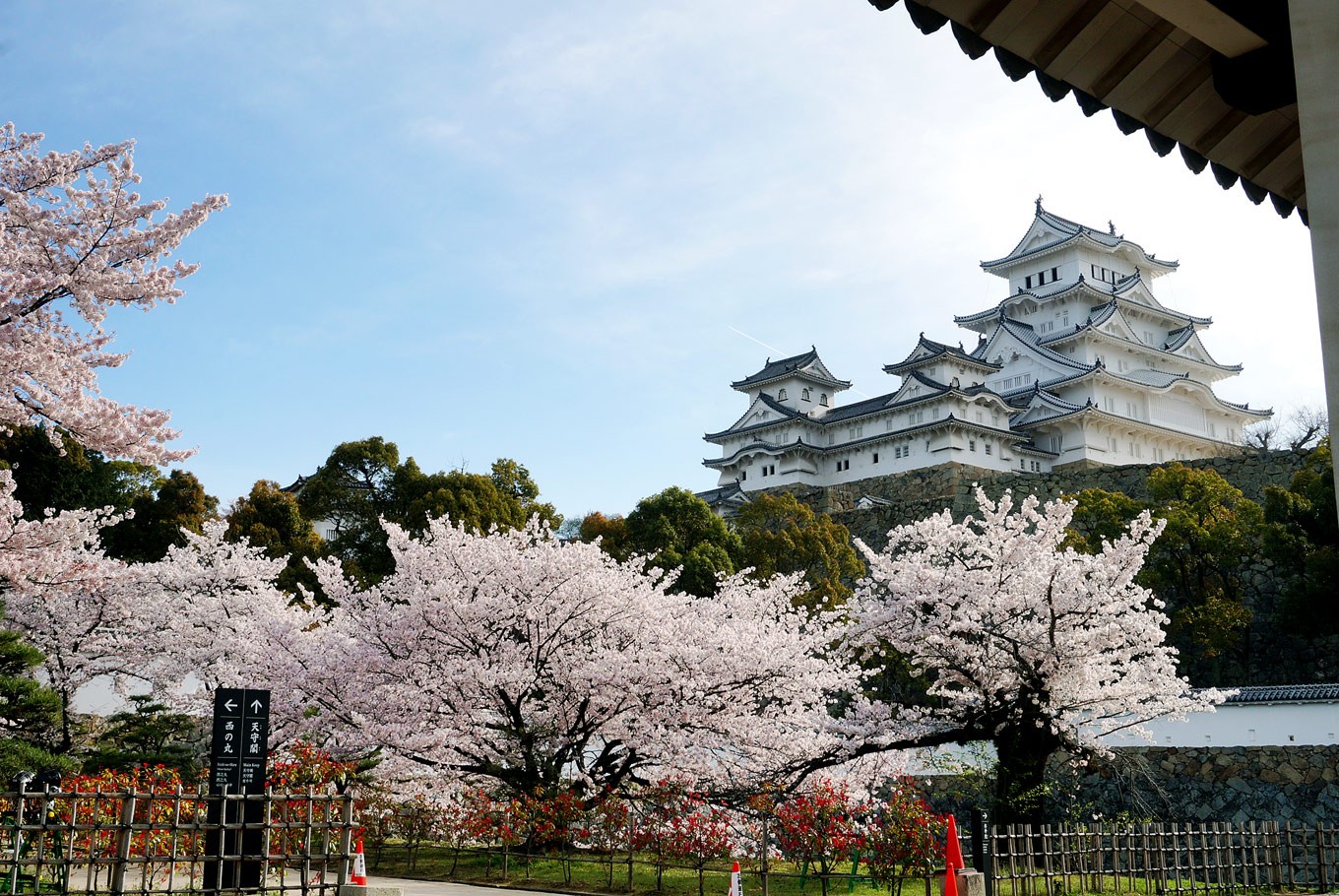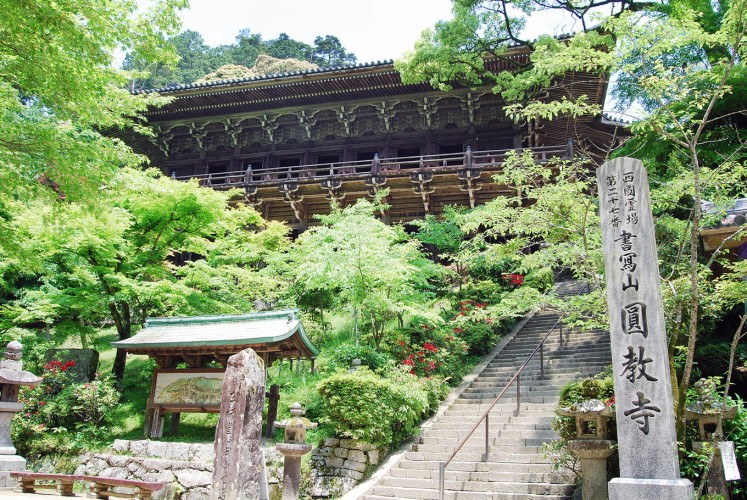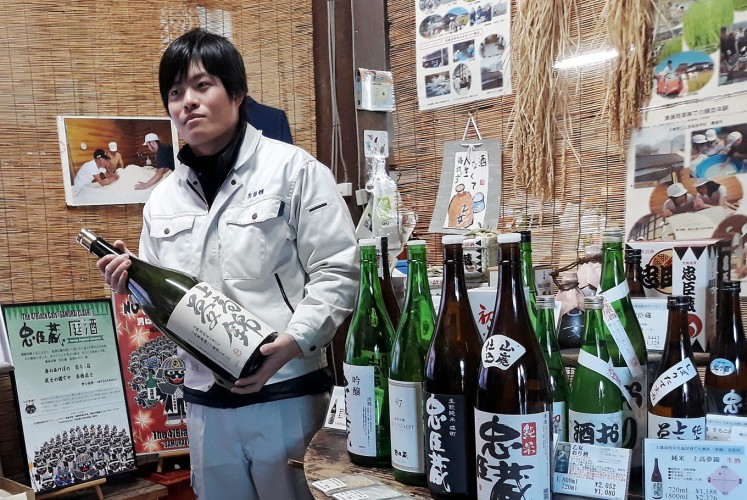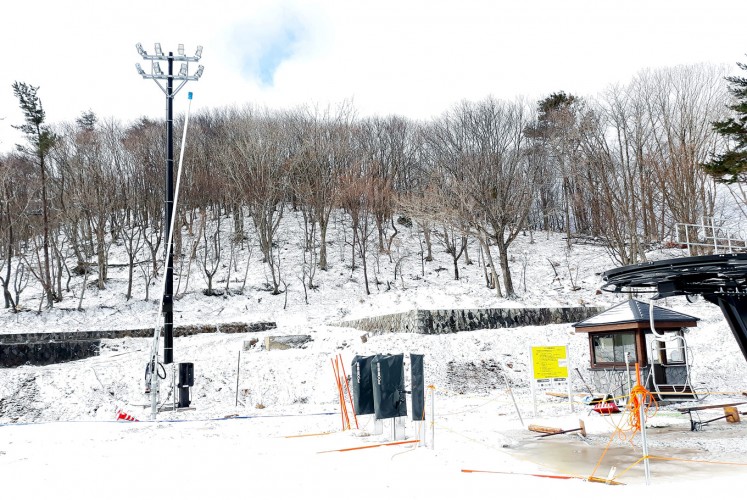Popular Reads
Top Results
Can't find what you're looking for?
View all search resultsPopular Reads
Top Results
Can't find what you're looking for?
View all search resultsHyogo a land of hidden gems
While Japan’s major cities like Tokyo and Osaka offer many famous tourist attractions, the country’s numerous and stunning ancient villages provide perfect alternatives for those yearning for tranquility and majestic natural scenery.
Change text size
Gift Premium Articles
to Anyone
T
he Himeji City administration recently invited The Jakarta Post's Callistasia Anggun Wijaya on a four-day visit to Himeji and nearby cities. Here is her report.
Those seeking an escape from the crowds should consider visiting some lesser-known destinations in the Harima region of Hyogo prefecture, such as Himeji, Kamikawa, Tatsuno and Ako. These destinations are small cities, each with a population below 550,000 people.
Himeji
The small city of Himeji is home to the grand 400 year-old Himeji Castle, Japan’s first world heritage site, considered the country’s best preserved and most beautiful castle.
Unlike many other Japanese castles, Himeji Castle was never destroyed by war, earthquakes or fires, and thus, its original form has survived until today.
Inside the grounds of the castle, which rises 92 meters above sea level, visitors can enjoy a trove of photogenic views of the moat and the main keep, which rises majestically above castle’s beautiful cherry tree-filled grounds.
Men dressed as samurais welcome visitors at the main gate.
Instagram lovers should consider renting a kimono or samurai costume at the kiosks in Miyuki-Dori shopping arcade before entering the castle to capture unforgettable photos as they stroll around the castle.
The castle itself is built largely from wood.
“The wooden materials are intricately fitted together with the most advanced woodworking techniques. The castle is considered a national treasure in Japan,” Himeji Regional Revitalization Division director Kojiro Fukuda said.
Once inside the main keep, visitors have to climb six stories of narrow staircases, which surprisingly get steeper as one ascends, to reach the top.
But the effort is worth it for the breathtaking views of Himeji City.
Tranquility: The 1,000-year old Engyoji Buddhist temple on Mount Shosha in Himeji. The temple was used as the backdrop for The Last Samurai, starring Tom Cruise. (Himeji Convention & Visitors Bureau/File)The other popular spot in Himeji is the 1,000-year old Engyoji Temple complex on Mount Shosha which is perfect for visitors seeking a spiritual retreat. Parts of the movie The Last Samurai, starring Tom Cruise, were filmed inside the complex.
In addition to the city’s historical attractions, numerous other interesting spots can be found in and around Himeji, including the 4,000 square-meter Himeji Heartful strawberry farm. Here, visitors can enjoy picking strawberries and tasting their sweet and delicious flavors inside the warm greenhouse.
Ako
Ako, the hometown of the legendary 47 ronin, is located along the coast of the Seto Inland Sea, offering a fantastic mix of history and striking natural beauty.
The old city is home to Ako Oishi, the shrine built to commemorate the life of Kayano Sanpei and the 47 loyal samurai heroes, as well as Kagakuji Temple, which houses tombstones and wooden statues of the 47 ronin.
Sake master: Okuto Kan, the owner of the 400-year-old Okuto sake brewery, shows a bottle of sake in Oku City. The traditional brewery produces 20,000 liters of sake per year. (JP/Callistasia Wijaya)The city is also famous for its 400 year-old Okuto sake brewery, a traditional home industry which produces 20,000 liters of sake per year.
The sake, produced by only three workers, is made from special rice and water without alcoholic ingredients using traditional equipment.
Okuto Kan, the owner of the brewery, said they could only produce sake during winter.
“The yeast and koji can only work in cold temperatures. This is of course different from modern factories, which have air conditioners,” Kan said.
The city takes great pride in the brewery and the sake can only be bought in Ako itself.
Tatsuno
While every year visitors fall in love with Japan’s cherry blossoms, few know the beauty of the blooming plum trees, which can be seen in all their splendor at Ayabeyama Plum Groove Park in Tatsuno.
The grove, which stretches across 24 hectares at Ayabeyama Hill, is home to 20,000 white and red plum trees that are every bit as gorgeous as Sakura, and even smell better.
Read also: Forecast for Japan's cherry blossom season laid out
The white plum trees, which make up 70 percent of the grove, produce fruit that is harvested for plum wine and pickles, while the red plum trees are planted to keep the soil healthy.
After climbing for some 20 minutes up the hill, visitors can enjoy free plum juice and sweet sake by showing their admission tickets.
The grove is only open during the spring bloom period of 40 days each year.
“The grove is open from mid-February to the end of March. The trees produce fruit in June,” Shitotani Kazumi, the director of Kurosaki Cooperative, which manages the grove, said.
Kamikawa
White slopes: Opened in late December last year, the Mineyama Kogen Resort White Peak in Kamikawa village, Hyogo prefecture, is the newest resort in Japan. The ski resort is perfect for beginners thanks to the hill’s gentle slopes. (JP/Callistasia Wijaya)Kamikawa is perfect for those who want to try their hand at skiing. The small city of Kamikawa opened a new ski hill in December last year, the newest resort destination in Japan in the past 14 years.
While Hokkaido has become famous among skiers and snowboarders, the Mineyama Kogen Resort White Peak in Kamikawa provides a great alternative for beginners thanks to its gentle slopes.
The resort, managed by the local administration, has three pistes ranging from 862 to 1,170 meters in length with two chairlift lines.
The facility sits next to Mineyama Kogen Hotel RelaXia, a city-owned hotel decorated with Balinese furniture.
Tsutomu Shogaki, the director of MacEarth, the resort operator, said the resort was worth the detour while visiting Kyoto or Osaka.
“They can spend one or two days here to learn how to ski. We have also prepared ski equipment for visitors,” Shogaki said.
In addition, the Mineyama Kogen Highlands are famous as the back drop for the movie Norwegian Wood.










